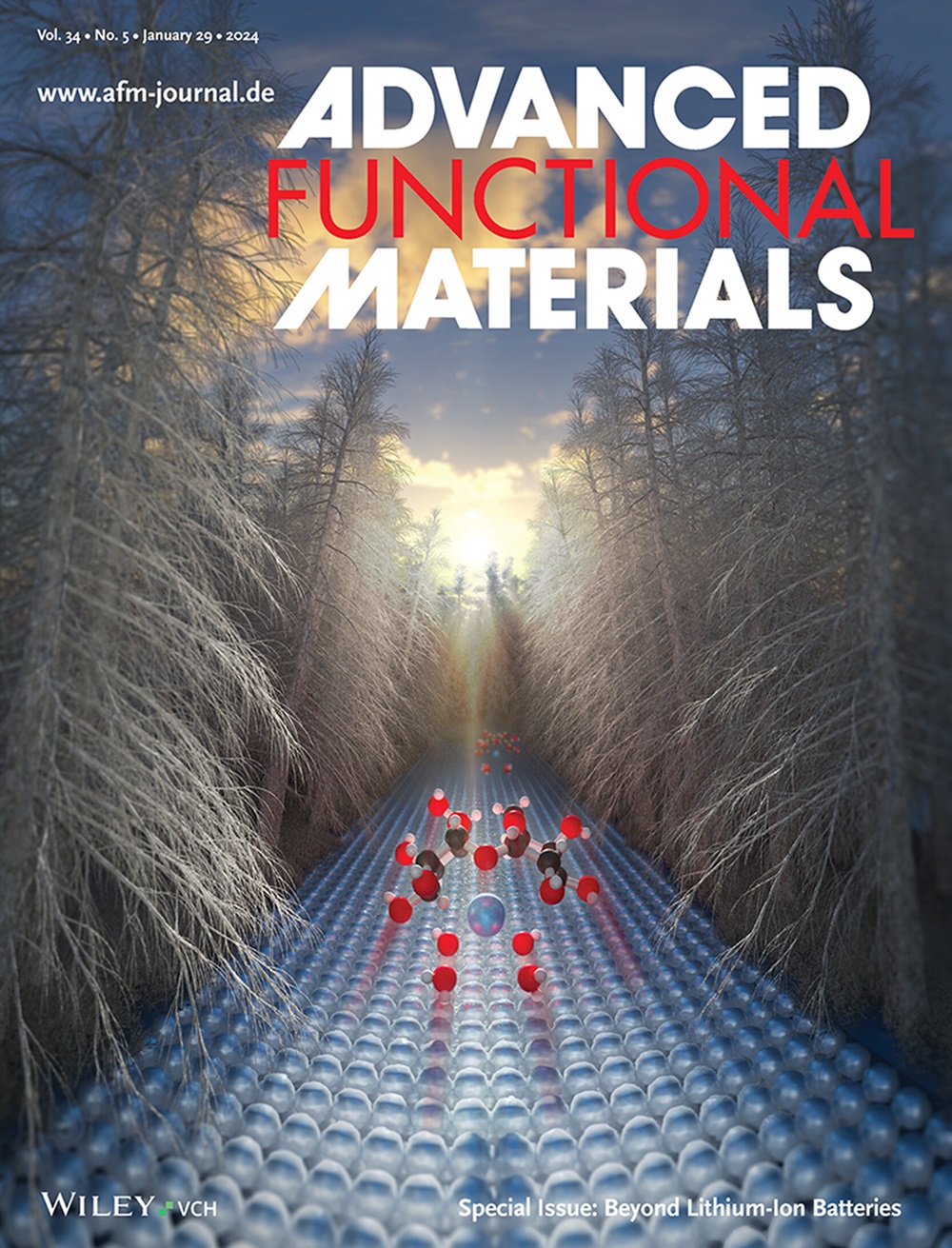Vertical Emission of Blue Light from a Symmetry Breaking Plasmonic Nanocavity-Emitter System Supporting Bound States in the Continuum
IF 18.5
1区 材料科学
Q1 CHEMISTRY, MULTIDISCIPLINARY
引用次数: 0
Abstract
A σh symmetry-breaking plasmonic honeycomb nanocavities (PHC) is proposed and realized that support quasi-BIC resonance modes with high-Q factors. The anodic oxidation-engineered strategy breaks out-of-plane symmetry while preserving in-plane symmetry, enabling the PHC to exhibit collective plasmonic lattice resonances (PLR) couplings and achieve Q-factors exceeding 106. Experimentally, perovskite quantum dots (PQDs) are coupled to the PHC, demonstrating effective tuning of their emission properties and beam quality in the blue spectral region, achieving a 32-fold emission enhancement by suppress Ohmic loss and the life time of quantum emitters, simultaneously realize vertical emission in the 2.556 – 2.638 eV region, with a far-field hexagonal beam shape and a full width at half maximum of 12.6 degree under optimal coupling conditions. Furthermore, topological band inversion is demonstrated and characterized by Zak phase transitions by continuously tuning the system parameters, confirming that the PHC supports topologically non-trivial q-BIC due to PLR coupling. The PHC presents itself as a promising next-generation, high-brightness nanoscale light source matrix, which can be directly scaled up to cover a wide wavelength range from UV to IR.

求助全文
约1分钟内获得全文
求助全文
来源期刊

Advanced Functional Materials
工程技术-材料科学:综合
CiteScore
29.50
自引率
4.20%
发文量
2086
审稿时长
2.1 months
期刊介绍:
Firmly established as a top-tier materials science journal, Advanced Functional Materials reports breakthrough research in all aspects of materials science, including nanotechnology, chemistry, physics, and biology every week.
Advanced Functional Materials is known for its rapid and fair peer review, quality content, and high impact, making it the first choice of the international materials science community.
 求助内容:
求助内容: 应助结果提醒方式:
应助结果提醒方式:


